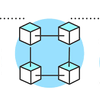Event Bubbling vs. Event Capturing in JavaScript
JavaScript is a powerful programming language that is commonly used for web development. One of the key features of JavaScript is its ability to handle events, which are user actions that occur on a web page. There are two mechanisms for handling events in JavaScript: event bubbling and event capturing. In this article, we will explore the difference between these two mechanisms and when to use each one.
Event Bubbling
Event bubbling is the default mechanism for handling events in JavaScript. With event bubbling, when an event occurs on an element, it first triggers the event on that element, and then on its parent element, and so on, all the way up the DOM tree until it reaches the top-level element. This process is called "bubbling" because the event bubbles up from the innermost element to the outermost element.
For example, suppose you have a button inside a div element, and both the button and the div have click event listeners attached to them. If you click the button, the click event will first trigger on the button, and then on the div. This is because the button is inside the div, and the event bubbles up from the button to the div.
Event Capturing
Event capturing is the opposite of event bubbling. With event capturing, the event first triggers on the top-level element and then on its child elements, all the way down to the innermost element. This process is called "capturing" because the event is captured by the top-level element before it reaches the innermost element.
For example, if you have a div inside a button, and both the button and the div have click event listeners attached to them, if you click the div, the click event will first trigger on the button, and then on the div. This is because the event is captured by the button first, and then bubbles up to the div.
When to Use Each Mechanism
In general, event bubbling is the more commonly used mechanism for handling events in JavaScript. This is because it is more intuitive and easier to understand than event capturing. However, there are some cases where event capturing may be useful. For example, if you have a complex nested structure of elements and want to ensure that an event triggers on a specific element before it reaches its parent elements, event capturing can be used.
Conclusion
Event bubbling and event capturing are two mechanisms for handling events in JavaScript. Event bubbling is the default mechanism and triggers events from the innermost element to the outermost element, while event capturing triggers events from the top-level element to the innermost element. Event bubbling is more commonly used, but event capturing can be useful in some cases. Understanding these two mechanisms is important for building robust and efficient web applications.

If you're preparing for a senior Node.js developer position, it's important to be ready for technical interview questions that will test your knowledge of Node.js and its related technologies. In this

As a JavaScript developer, it's essential to have a solid understanding of the language and its various concepts. In this article, we will provide some common interview questions and their answers to

Frontend development is an essential part of web development that focuses on building the user interface of a website or application. Frontend developers are responsible for creating visually appealin

Understanding how `this` works in JavaScript is essential for any developer working with the language. In this article, we will explore what `this` is, how it works, and common use cases.

Event delegation is a concept in JavaScript that allows developers to handle events efficiently and improve the performance of web applications. In this article, we will explore what event delegation

JavaScript is a powerful programming language that allows developers to create complex web applications. One of the most important concepts in JavaScript is the ability to handle asynchronous code. In

As web applications become more complex, the size of the JavaScript bundles that are required to run them can become unwieldy. This can lead to slow load times and poor user experiences, particularly

Managing state in a complex application can be a daunting task, but Redux can help simplify the process. Redux is a popular library for managing state in JavaScript applications, and it can be used wi

React is a popular JavaScript library for building user interfaces. One of the key features that sets React apart from other libraries is its use of a virtual DOM. In this article, we will explore wha
